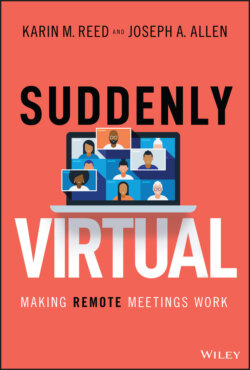Читать книгу Suddenly Virtual - Karin M. Reed - Страница 23
Better Accountability
ОглавлениеThink back to your most recent conference call. Perhaps you had your phone on speaker and were focused intently on what was being discussed, or perhaps you had your phone on mute so your teammates could not hear you typing away on your keyboard as you answered your emails.
One of the biggest challenges of an audio‐only meeting is the gravitational pull of multitasking. In fact, research conducted by Intercall, a large conference call company, found that 65% of conference call attendees are “doing other work” during those virtual meetings that are audio alone (Angle 2020). And why not? After all, we are only required to use our ears, not our eyes, right? You can easily listen in while ticking off a whole host of items on your to‐do list at the same time. Unfortunately, as much as we want to believe that we are master multitaskers, research indicates that this does not line up with reality. Our productivity suffers, as do the outcomes of our meetings.
If your virtual meeting involves everyone turning their webcams on, the lens holds people accountable. It sees everything, and as much as you try to hide checking out that incoming text or your surreptitious search for a birthday gift for your Aunt Alice, your coworkers can see that you are not giving the meeting your undivided attention. Expect to be called out.
The benefits of having the webcam on were witnessed by Srini Koushik, Chief Technology Officer of Magellan Health, who was quoted in the 2017 Forbes Insights report, The Connected Culture: “Once video engages during a call, the entire feel and etiquette of the meeting changes. Participants are less apt to ‘zone out.’ The result is a superior level of closeness and engagement” (Forbes Insights 2017).
From a meeting science perspective, most of the multitasking behaviors just mentioned would be labeled counterproductive meeting behaviors or counterproductive use of technology in meetings (Allen, Yoerger, and Lehmann‐Willenbrock 2015; Brown et al. 2016). These behaviors range from simple bad behavior while engaged in the meeting (e.g. complaining or blaming) to the distracting behaviors (e.g. texting, emailing, shopping, etc.), and all of them are known to harm overall meeting satisfaction, effectiveness, and performance. Furthermore, they can even sow distrust among colleagues because being disengaged in the meeting (say, completing your online grocery order) means a colleague expecting your support could be left out on a limb with an idea they proposed.
